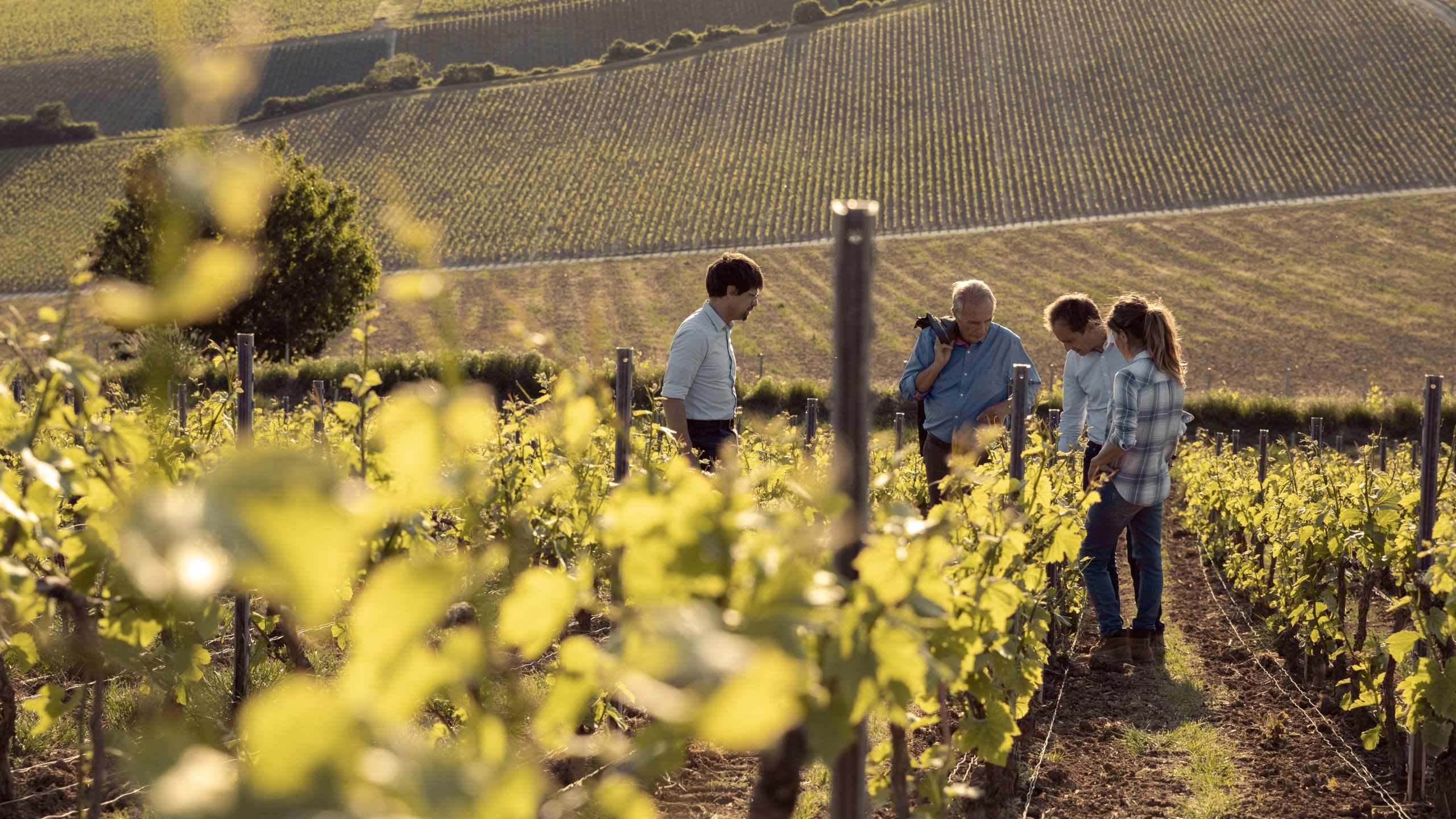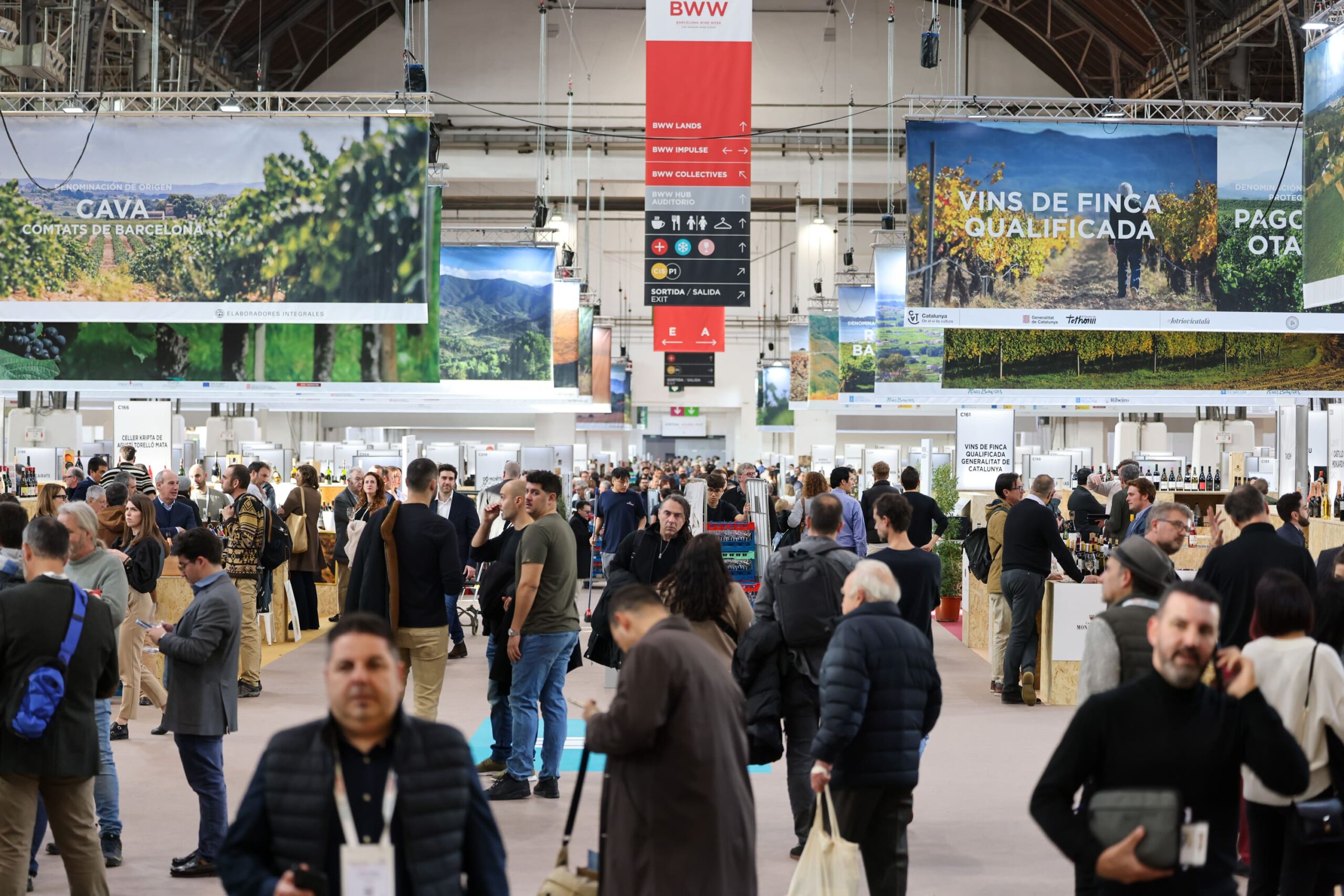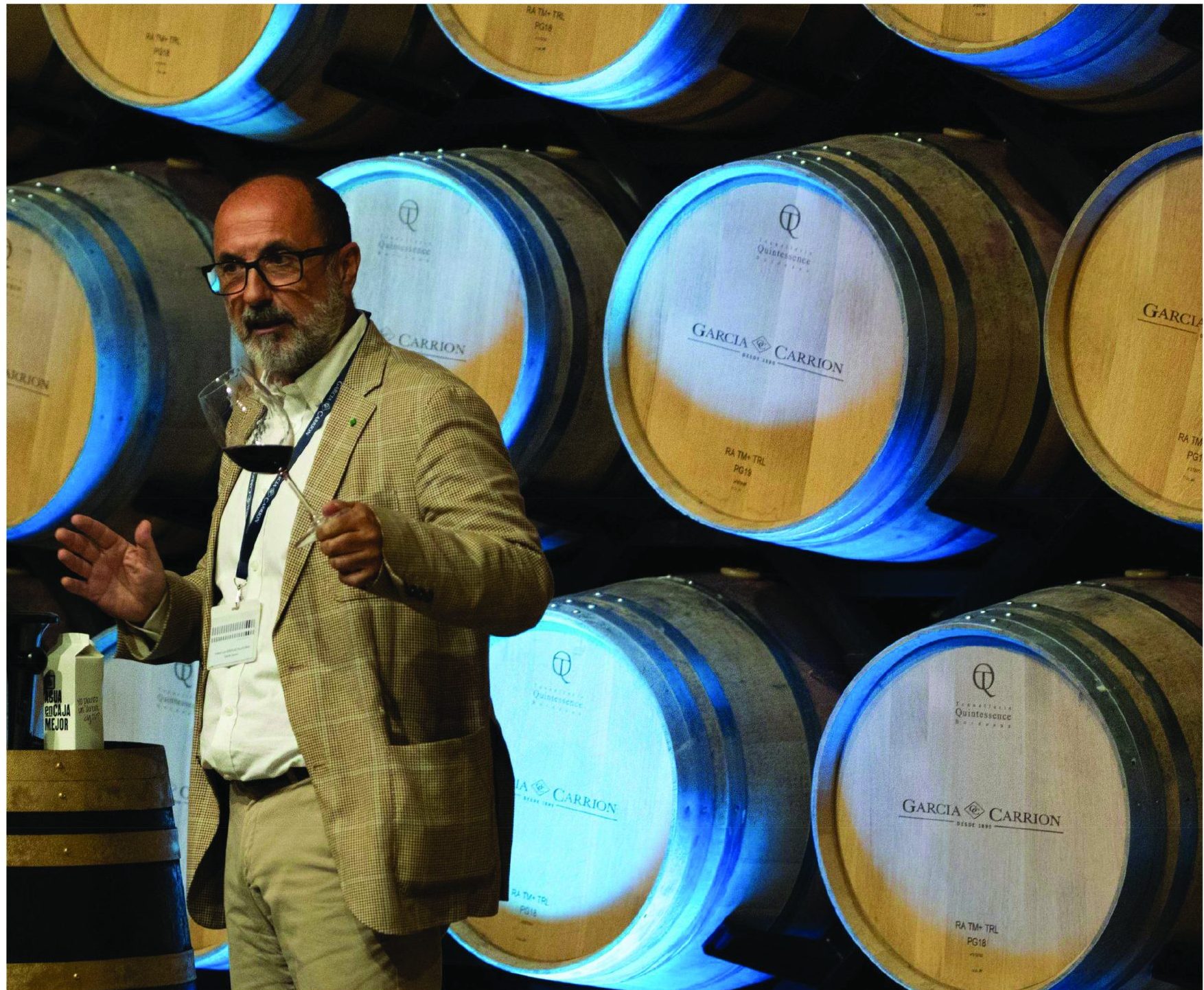Champagne Lanson commits to sustainable future
Champagne Lanson has made a commitment to encourage all 400 of its growers to work toward a sustainable or organic viticultural future based on the Comité Champagne’s VDC framework, using its Green Label organic vineyard as a benchmark.
Lanson launched its Green Label last year, made with certified organic grapes from the 2012 vintage grown at a single vineyard in the Marne Valley around the village of Verneuil.
These vineyards – which had been managed biodynamically – were acquired in 2010 from Leclerc Briant, having come up for sale after owner Pascal Leclerc Briant died in October of that year.
“We could have used it for traditional viticulture but [Philippe Baijot – president of Lanson] was convinced it was important to retain organic viticulture,” said Hervé Dantan, Lanson’s chef de cave, speaking to the drinks business last week.
“It’s something that was very important for us. It’s a single vineyard on 16 hectares with three grape varieties; Chardonnay, Pinot Noir and Meunier, with 0.02ha of Pinot Blanc, just for experimentation in the blend.”
The organic non-vintage Brut Champagne is made in the Lanson style, which means that the base wine will not undergo malolactic fermentation, and is aged for more than three years on its lees.
As for the motivation to launch an organic label, and market it as such, Dantan believes the concept has not only vastly grown in importance among consumers in the past five years, but is crucial to the ongoing quality and sustainability of the Champagne region.
‘WE CONSIDER IT A LABORATORY’
“Philippe Baijot bought this vineyard eight years ago when not so many people were talking about organic,” says Dantan. “It’s not a fad, we felt that it was important to have an organic vineyard and label.
“Back then, Philippe was a pioneer because he decided to continue the vineyard as organic. It is more expensive, because we experiment with many different things and need more people to work in the vineyard. It’s something that is new for us and it’s so interesting.We consider it a laboratory because we experiment with many different things. It’s like a school because we learn a lot. And for us it’s so important to have because we have a role with our suppliers of grapes and we consider it as a way of being able to show them what we are able to do in the research vineyard.”
As such, this year Lanson has announced a new partnership with its 400 growers that will see it actively encourage and support each of them in converting to organic or sustainable viticulture.
Using its own vineyard as a benchmark example, the partnership will involve educational visits, self assessment of vineyards and support for growers to help them reach VDC (Viticulture Durable en Champagne) accreditation – the sustainable viticulture certification introduced by the Comité Champagne in 2014.
“Because of the impact on the environment, organic is something that we must champion if we want to continue to think about excellence in Champagne,” adds Dantan. “We have to go behind the quality of our Champagne and be involved in the development of organic and sustainable viticulture. That’s why we in 2010 we developed this vineyard, and it’s why in 2018 we have developed a new partnership with our suppliers to encourage them to work toward this.”
Growers can either work toward becoming organic, or sustainable, which encompasses a greater level of consideration for the ethical, economic and social impact on a region, and goes beyond the abstention of pesticides and fungicides.
Partner Content
The intention is to “create value and to share it while limiting the material and energy flows, avoiding the destruction of the ecosystems, and protecting the biodiversity and landscapes against climate changes”, Lanson explained in a note to its partners.
“It’s an ambitious project to help preserve the biodiversity, ecology and environment of Champagne. We already have a strong partnership with our suppliers. Some of them are already doing organic or sustainable winemaking, so it will continue to be a good partnership. I believe first it is for the quality. Many people will say there is no impact on quality because it’s just an impact on the environment. But we believe it will improve quality, not only in the vineyard, but create stronger relations with our suppliers, which will lead to greater quality and consistency, and better traceability.”
CLIMATE CHANGE
Following the difficult 2017 harvest, which saw bitter frosts wipe out large swathes of the crop, Dantan is optimistic about the 2018 harvest, but conscious of Champagne’s changing climate due to climate change.
“30 years ago we would always start harvest 100 days after flowering, but now with global warming it’s more like 94 days after flowering,” he explains. “This year, with long sunny days, and early flowering at the end of May in some plots, maybe it will be shorter, But it’s too early to say. It will depend on the weather.”
Putting the changes to its climate in a broader context, Dantan recalls the first time that he was involved in an early harvest that began in August, in 1976.
“It was the first time ever in the 21st century. We had to wait until 2003 to have another harvest in August. So it was something very special. I remember the 2003 harvest in August was surprising. Then we had ‘07 in August, and then ‘11, ‘15, and ’17. The frequency of early harvests has increased a lot in the last 15 years. So the climate has changed. The growth of vines is faster.”
A changing climate isn’t necessarily negative, says Dantan, and is certainly enhancing the prospects of many viticultural regions, in particular England. In Champagne, too, it has had a positive impact, says Dantan, helping to increase the frequency of vintage years, with warmer days helping grapes to ripen more reliably.
“2004, ‘05, ‘06, ’07, ‘08, ‘09, not 2011, but 2012, ’13, ’14 and ’15 were all vintages. 2016 not so much, and 2017 was not really a good year but the frequency of our vintages is higher because the ripeness occurs with longer days and a bit more sun,” he says.
What has changed is the way in which vignerons operate in the vineyard, which a much more proactive approach required.
“What’s changed is that climate can be very contrasted, with the possibility of short heavy rain or a heatwave,” says Dantan.
“We need to be more reactive now in the vineyard, during the vegetative cycle to fight against disease. Because some times we can have a little but more rain, hail or frost, some storms. So we have to adapt and be very reactive. It’s the same thing for harvest. Since the cycles is short and maturation is faster, we need to be ready to go at the right moment.”




